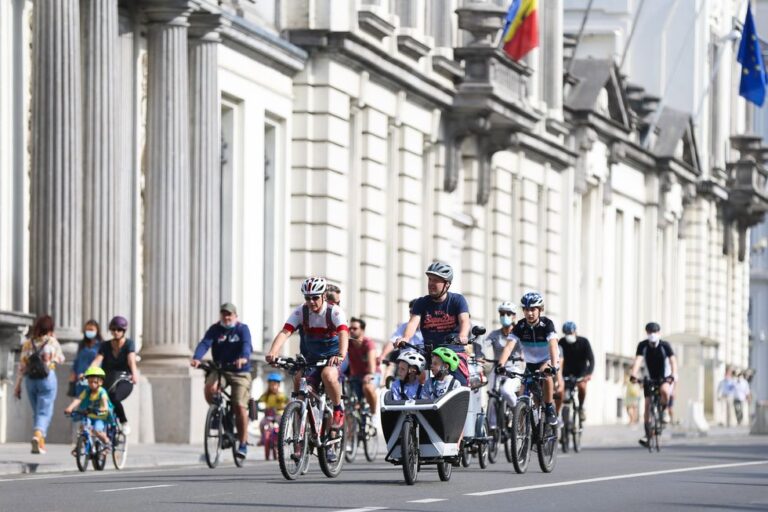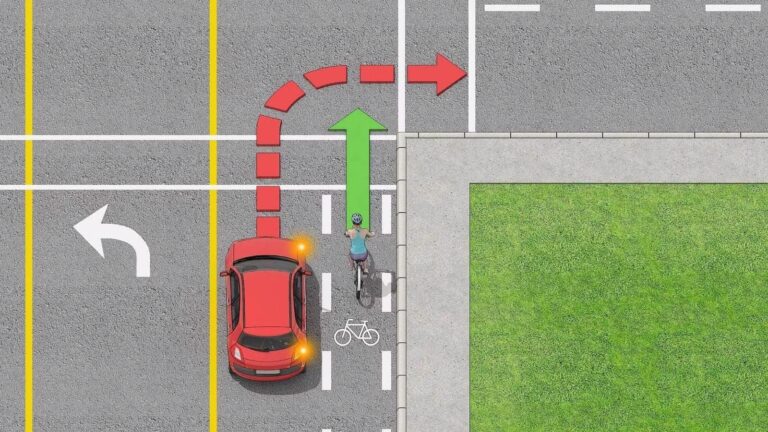Narrow Lanes – Redesigning Streets for Safety, Efficiency, and Livability!
As cities evolve to prioritize safety, sustainability, and accessibility, the design of our streets plays a crucial role. One effective, often underappreciated urban planning strategy is the use of narrow lanes. While wider roads may seem like a convenience, narrowing lane widths can lead to safer, calmer, and more efficient streets.
This article explores the concept of narrow lanes, their benefits, where they’re used, and why they matter for creating better urban environments.
📏 What Are Narrow Lanes?
Narrow lanes refer to travel lanes that are smaller in width than the typical standard, often ranging between 9 to 10.5 feet (2.7 to 3.2 meters). In contrast, traditional lanes in many cities are 11–12 feet (3.3–3.6 meters) wide, originally designed to accommodate high-speed, highway-style traffic.
However, research and modern planning trends show that narrower lanes encourage slower driving, reduce crash severity, and create space for other road users.
🚦 Why Do Narrow Lanes Matter?

Narrow lanes are more than just a design tweak—they are a safety-first strategy that supports multimodal transport and better land use. Key goals include:
- Improving road safety
- Calming traffic speeds
- Making room for sidewalks, bike lanes, and green space
- Encouraging walkability and livability
They are often used in conjunction with complete streets policies and traffic calming measures to create more balanced transportation networks.
✅ Benefits of Narrow Lanes
1. Reduced Vehicle Speeds
Narrow lanes create a natural visual and physical cue that encourages drivers to slow down. Slower speeds mean fewer and less severe accidents.
2. Improved Road Safety
Studies have shown that crash rates are lower on roads with lanes narrower than 11 feet, especially in urban areas where interactions between vehicles, cyclists, and pedestrians are frequent.
3. More Space for Other Uses
By reducing lane width, cities can repurpose extra space for:
- Wider sidewalks
- Dedicated bike lanes
- Transit lanes
- Street trees or parklets
This promotes multi-modal transportation and enhances the overall public realm.
4. Enhanced Urban Design
Narrow lanes contribute to more people-friendly, walkable streets. They reduce the dominance of cars and support the creation of vibrant, active public spaces.
5. Cost Efficiency
In some cases, narrow lanes reduce the need for major road expansions or costly right-of-way purchases, making them a cost-effective tool for safer streets.
🏙️ Where Are Narrow Lanes Used?
Narrow lanes are increasingly being adopted in:
- Urban downtowns
- Residential streets
- Transit-oriented developments
- Shared streets or “woonerfs”
- School and hospital zones
🌍 Examples from Around the World:
- Amsterdam & Copenhagen: Narrow vehicle lanes leave more space for bikes and pedestrians.
- New York City: Uses narrow lanes in dense boroughs to make room for bus lanes and protected bike paths.
- Tokyo: Residential streets are often very narrow, with vehicles traveling slowly and pedestrians sharing space.
📐 Typical Lane Width Guidelines
| Lane Type | Standard Width | Narrow Lane Width |
| General vehicle lane | 11–12 feet | 9–10.5 feet |
| Residential streets | 10–11 feet | 9 feet |
| Bus/transit lanes | 11–12 feet | 10 feet |
| Bike lanes | N/A | 4–6 feet (adjacent to narrow car lanes) |
Many organizations, including the Federal Highway Administration (FHWA) and NACTO (National Association of City Transportation Officials), support narrower lanes as a safe and sustainable design approach.
🧩 Narrow Lanes vs. Wide Lanes: What’s the Difference?
| Feature | Wide Lanes | Narrow Lanes |
| Encourages Speed | Yes | No |
| Supports Multi-Modal | No | Yes |
| Safer in Urban Areas | Less safe | More safe |
| Requires More Space | Yes | No |
| Supports Livability | Less supportive | Strongly supportive |
⚠️ Are There Downsides?

While narrow lanes offer many benefits, they may not be suitable for every road. Challenges include:
- Limited space for large vehicles like trucks and emergency services
- Driver discomfort if lanes feel too tight
- Potential for sideswipe accidents if poorly implemented without buffers or guidance
That’s why narrow lane design should always be context-sensitive, balancing safety with traffic needs.
🌿 Narrow Lanes in Sustainable Urban Planning
As cities work to reduce car dependency, lower emissions, and improve accessibility, narrow lanes are becoming essential to sustainable transport networks. They reflect a shift from car-centric thinking to people-first design.
By reallocating space from overbuilt roads to sidewalks, cycle tracks, or transit, cities can create streets that prioritize health, equity, and the environment.
FAQ’s
1. What are narrow lanes in road design?
Narrow lanes are travel lanes that are intentionally designed to be narrower than standard—usually between 9 to 10.5 feet wide—to reduce vehicle speeds and promote safer, more efficient road use in urban areas.
2. Do narrow lanes make roads safer?
Yes. Narrow lanes naturally encourage drivers to slow down, which can significantly reduce the likelihood and severity of accidents, especially in pedestrian-heavy and residential zones.
3. How do narrow lanes support walkability and cycling?
By reducing lane widths, cities can reallocate road space to add sidewalks, bike lanes, or green buffers—creating a more balanced environment that supports multi-modal transportation and active mobility.
4. Are narrow lanes suitable for emergency or large vehicles?
While narrow lanes may present challenges for larger vehicles, careful planning and alternative routing can accommodate emergency access. Some cities also use mountable curbs or shared lanes to help mitigate concerns.
5. What is the difference between narrow lanes and shared streets?
Narrow lanes refer to reduced-width vehicle lanes, while shared streets (or “woonerfs”) are designed for mixed-use, where cars, pedestrians, and cyclists share the same space with minimal separation.
6. Can narrow lanes be used on bus or transit routes?
Yes, but with careful design. Transit lanes may be slightly wider (around 10 feet) to accommodate buses while still maintaining slower traffic speeds and prioritizing public transport efficiency.
7. Do narrow lanes increase traffic congestion?
Not necessarily. Although drivers move more slowly, the improved flow from fewer accidents, better lane discipline, and multi-modal balance often results in more efficient overall movement.
8. Are narrow lanes part of complete streets design?
Absolutely. Narrow lanes are a key component of Complete Streets policies, which aim to make streets accessible and safe for all users—not just cars, but also pedestrians, cyclists, and public transit riders.
Conclusion: Small Lanes, Big Impact
Narrow lanes are a simple yet powerful way to redesign streets for safety, efficiency, and sustainability. By slowing traffic and making room for other road users, they help create vibrant, walkable neighborhoods where people want to live, work, and play. For communities looking to modernize their infrastructure without massive investment, narrowing lanes is a smart, proven solution that puts people—not just cars—at the center of street design.






